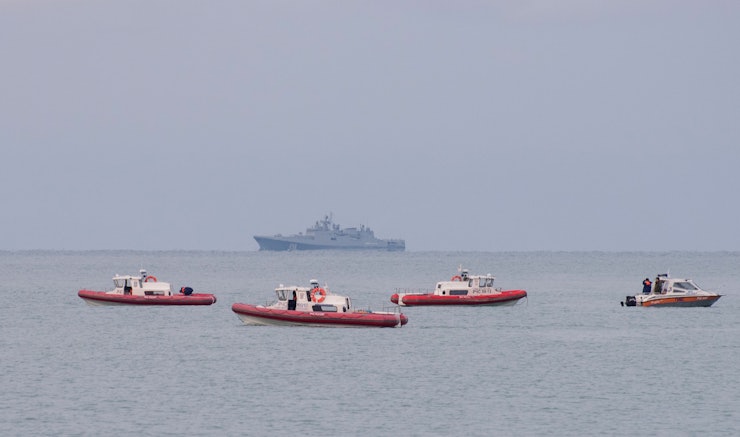Searching for the Cause . . . .
 |
| The Kremlin says the experienced pilot could have been to blame for the deadly crash : East2WestNews |
"Possible malfunctions . . . certainly wouldn't have prevented the crew from reporting them."
Vitaly Andreyev, former senior Russian air traffic controller
"We will conduct a thorough investigation into the reasons and will do everything to support the victims' families."
Russian President Vladimir Putin
 |
| Source: YEKATERINA SHTUKINA/AFP/Getty Images |
On the other hand, the dreadful pain of the loss is there, yet another trauma for the Russian people to bear and the administration to bear up under. Along with the haunting reality of a previous 17 major Tu-154 plane crashes responsible for killing over 1,760 people. Most of which have been attributed to human error, and others to technical malfunctions. That's a lot of dead people. That's a lot of plane crashes attributable to one plane. Designed, engineered and manufactured in Russia.
Russia prides itself on its engineering and manufacturing capabilities of technologically advanced weaponry. Russian President Vladimir Putin boasted only a few days ago of the technological feats of engineering and manufacturing that Russia has perfected, that its military is now second to none, prepared and capable of responding to any threat, conventional or nuclear. If the Kremlin could identify an attack by terrorists having caused the latest plane to disintegrate with all aboard sacrificed, anguish could be directed there.
But Russian failed technology? Russian pilots not up to the job of flying Russian planes safely? Unthinkable! The three-engine airliner was designed fifty years ago. Over one thousand were built, and used throughout Russia and worldwide. The Tu-154 that crashed on Sunday was built in 1983 and tested in factory check-ups with maintenance carried out in 2014 and only months earlier in 2016, according to the Defence Ministry.
 |
Members of the Aleksandrov Song and Dance Ensemble of the Russian
Army perform at the concert marking the Day of the Union State at the
25th International Art Festival Slavonic Bazaar in Vitebsk. (File) © Sputnik/ Viktor Tolochko
|
For all the technical advances that Mr. Putin is so proud of, the plane's flight records had no radio beacons for locating purposes. A critical oversight. One might imagine more care would be taken to preserve the lives of so many people, 84 passengers and eight crew members. Not just any passengers but 60 members of the famed Red Army chorus heading to Syria to perform for Russian troops. Among the passengers, nine journalists and a Russian doctor honoured for her war zone ministrations.
The crash into the Black Sea took place two minutes after takeoff, and weather could not have been a factor. Over three thousand rescue workers from 32 ships have been tasked in a futile rescue attempt because there was no one to be rescued. Eleven intact bodies initially recovered, and plenty of body parts; death was likely instantaneous for all aboard. Helicopters, drones and submersibles all responding to the need for action, to retrieve bodies and debris.
 |
| A search-and-rescue operation begins after a Russian Defense Ministry plane, with at least 92 people aboard, crashed into the Black Sea after taking off from the city of Sochi on Dec. 25. Artur Lebedev/TASS/ZUMA Press |
Labels: Air Disaster, Black Sea, Russia

<< Home